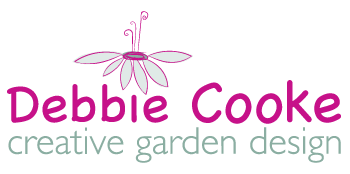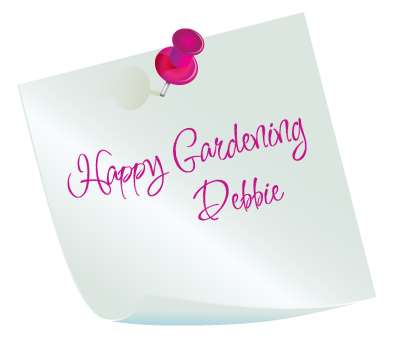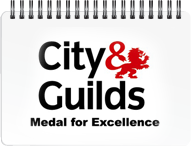Hedges for Hogs
October 26, 2016 8:08 am Leave your thoughts(& bees, butterflies, birds and other critters)
Hedges are an excellent way to encourage wildlife into our gardens. They provide food, shelter and breeding sites.
You may not be in a position to plant a new hedge. Maybe you already have mature hedges or fences that are owned by neighbours. It may be possible to incorporate more wildlife friendly hedging plants into an existing hedge.
Many of the plants listed below can also be grown as stand alone trees or large shrubs and placed within a mixed border. Some are climbers and others are also suitable to be grown as wall trained shrubs.
The Benefits of Hedges
Easy Access
Something we don’t always consider is ensuring that wildlife has access to our gardens. I’m thinking, in particular, of ground or water dwelling creatures like Frogs, Newts, Hedgehogs and other small mammals. Hedges are favourable but if a fence is essential, cover it in wildlife friendly climbers. Please try to make sure there’s a space somewhere for Mrs Tiggywinkle and her friends to pass through. If you’re looking for security very prickly hedges will deter intruders but still allow access for wildlife.
For more on Hedgehogs see ‘How Hedgehog Proof is your Garden?’
Wildlife Corridor
This swarm of bees are on route to their new home
A hedge can do everything that a fence can do in terms of demarcating your boundary, providing you with privacy and security. A fence however cannot also create essential corridors of plants for safe movement of wildlife.
A Sheltered Environment
Hedges are also much better as windbreaks and at absorbing sound than a fence and they are less likely to blow down during a storm.
Hedges provide a multitude of benefits for wildlife in the form of Shelter, Nesting and Roosting sites. They also act as a refuge from predators and as a source of food for a diverse selection of creatures. Having a mixed hedge will encourage wildlife to visit, feed and breed in your garden.
What do you get in return?
You will be rewarded with a lovely green, possibly fragrant and floral backdrop to your garden. With a careful choice of plants it will also be laden with colourful berries in the winter. Your garden will be filled with the sound of birds singing. Hopefully you will enjoy hours of entertainment as you watch the birds, bees and butterflies going about their daily business. With luck your crops will be pollinated ensuring good harvests and the pests in your garden will hopefully be kept under control.
What about maintenance?
Hedges don’t have to be high maintenance; native hedgerows along verges are only cut once or twice a year. That is all I do with mine. Admittedly if you have a very small garden you might need to rein it in a bit more often. On the up side there is no painting involved and you will never have to replace a broken panel.
Here are some of my favourite wildlife friendly hedging plants:
Top of my list is the Hawthorn – Crataegus monogyna
Sometimes called May flower due to its flowering time. The usually white, scented flowers mature into clusters of shiny red berries known as Haws. The flowers, berries and even the foliage are a food source to a huge number of insects, mammals and birds.
Next up is Blackthorn (Sloe) – Prunus spinosa
The white flowers appear before the leaves in March and April and provide a valuable food source for insects. The foliage is food for the caterpillars of several moths and butterflies. The dense thorny habit provides safe nesting sites and a plentiful supply of food in the form of caterpillars and other insects in summer with juicy berries (sloes) in the autumn.
I love the Guelder Rose – Viburnum opulus
Image courtesy of www.ashridgetrees.co.uk
Sometimes known as Snowball Tree, this deciduous shrub has large creamy white flowers which appear in May to July and are favoured by hoverflies. The hanging clusters of bright red berries in autumn are an important food source for birds.
Another useful Viburnum is the Wayfaring Tree – Viburnum lantana which has similar attributes to the Guelder Rose.
Lets hear it for the Holly – Ilex aquifolium
Holly offers a whole lot more than just the familiar glossy red berries which are an essential food source for birds and small mammals in winter. Its fairly insignificant flowers provide nectar and pollen and its leaves are a food source for caterpillars of butterflies and moths. Its deep, dry leaf litter is used by hedgehogs and small mammals to hibernate in. As it’s only female plants that produce berries, you will need to have a male nearby.
The Stunning Spindle – Euonymus europaeus I always have an eye for the unusual ;o)
I couldn’t find any to photograph so I have to thank www.chewvalleytrees.co.uk for this beautiful image
This deciduous native tree is often seen in hedgerows. It has unmistakeable seed pods in the most stunning pink with contrasting bright orange seeds. The leaves are the food source for many moths and the holly blue butterfly. Aphids are also attracted to the leaves, which in turn attracts their predators, including many insects and birds. The fairly insignificant flowers appear in May and June and provide food for insects.
My favourite wildlife plant Firethorn – Pyracantha
It can be grown within a hedge but also does very well as a wall shrub. It has white spring flowers followed by Red, Orange or Yellow berries.
I have a Pyracantha under my living room window. When the blackbirds feed on the berries they are at windowsill height
Do bear in mind that if these are constantly clipped hard into a formal hedge you may forgo some flowers and subsequent fruit. You will however, still be providing a valuable habitat and highway for wildlife.
If you can dare to go wild, in hedges or for fences and walls:
Clamberers and Scramblers
Doesn’t everybody love a Blackberry/Bramble (Rubus fruticosus)

The flowers are a food source for bees and other wild animals. The leaves are eaten by caterpillars and some grazing mammals including deer. The ripened berries are a favourite with birds but also Badgers and Foxes.
Roses? you say: Dog Rose – Rosa canina, I say.
The dog rose is really a climber that uses its curved spines to weave its way between other shrubs for support. Its large pink or white, faintly sweet scented, flowers are produced in May and June and are an important nectar source for insects. In September and October clusters of striking red, oval hips appear which are a valuable food source for birds.
Fragrant Honeysuckle - Lonicera periclymenum
This climber provides scented, summer flowers and plays host to all manner of insects including moths. These in turn are food for birds and other creatures. In autumn it provides berries and shelter for birds and small mammals. It’s happy scrambling through a hedge but can also be grown against a fence or wall.
Love it or hate it Hedera helix – Common Ivy is one of our most precious native evergreen plants and plays a vital role for British wildlife.
If you’re concerned about Ivy strangling your hedge then find a spot, maybe against an old fence or wall or in a corner that you’re not precious about. Believe me you will be rewarded for your efforts by providing bees, hoverflies and the occasional wasp with essential food before they hibernate. And when the berries ripen the blackbirds will spend many a happy hour tugging at the juicy black treats. (Watch your washing though ;o)
Ivy provides food for caterpillars of butterflies and moths, as well as nesting and roosting shelter for birds.
It won’t flower if it’s kept too tightly clipped so be brave and let it loose a bit.
If the birds can spare a few of the ripened berries, I like to use them to decorate the house in winter.
I believe it is important to provide wildlife with as much of its naturally, nutritious food as we can. So the more berries and beasties you can provide, the better.
Colour choices:
Birds do seem to eat berries in a certain order of preference. It is apparently due to the way in which they perceive colour which is different to the way we do. Black and purple are favourites followed by red and orange then yellow and white. Pale berries are often left until last or never eaten at all.
Some other suggestions:
Here are some more suggestions but there are plenty of others you could use. Suppliers like the one listed here, have plenty of choice and also put together packages of appropriate plants: RSPB Approved Hedging Suggestions
Maple syrup anyone? Field maple – Acer campestre
This native deciduous tree, often grown as a hedging plant, provides flowers for bees and fruits for birds, and small mammals. The leaves are eaten by the caterpillars of several species of moth. It also attracts aphids which in turn attract their predators, including many species of ladybird, hoverfly and bird.
Alder – Alnus glutinosa
Another native tree which provides food for the caterpillars of several moths, butterflies and crane flies. The catkins provide an early source of nectar and pollen for bees, and later the seeds are eaten by birds.
Bird Cherry - Prunus padus: Does what it says on the tin. Cherries for birds, nectar for insects and leaves for various moths. Is toxic to livestock!
Wild Privet – Ligustum vulgare is not native but has its value.
Common Elderflower - Sambucus Nigra
Please be aware that many plants and in particular berries, may be poisonous to humans. Please exercise caution around any plants that you are not completely familiar with.

















